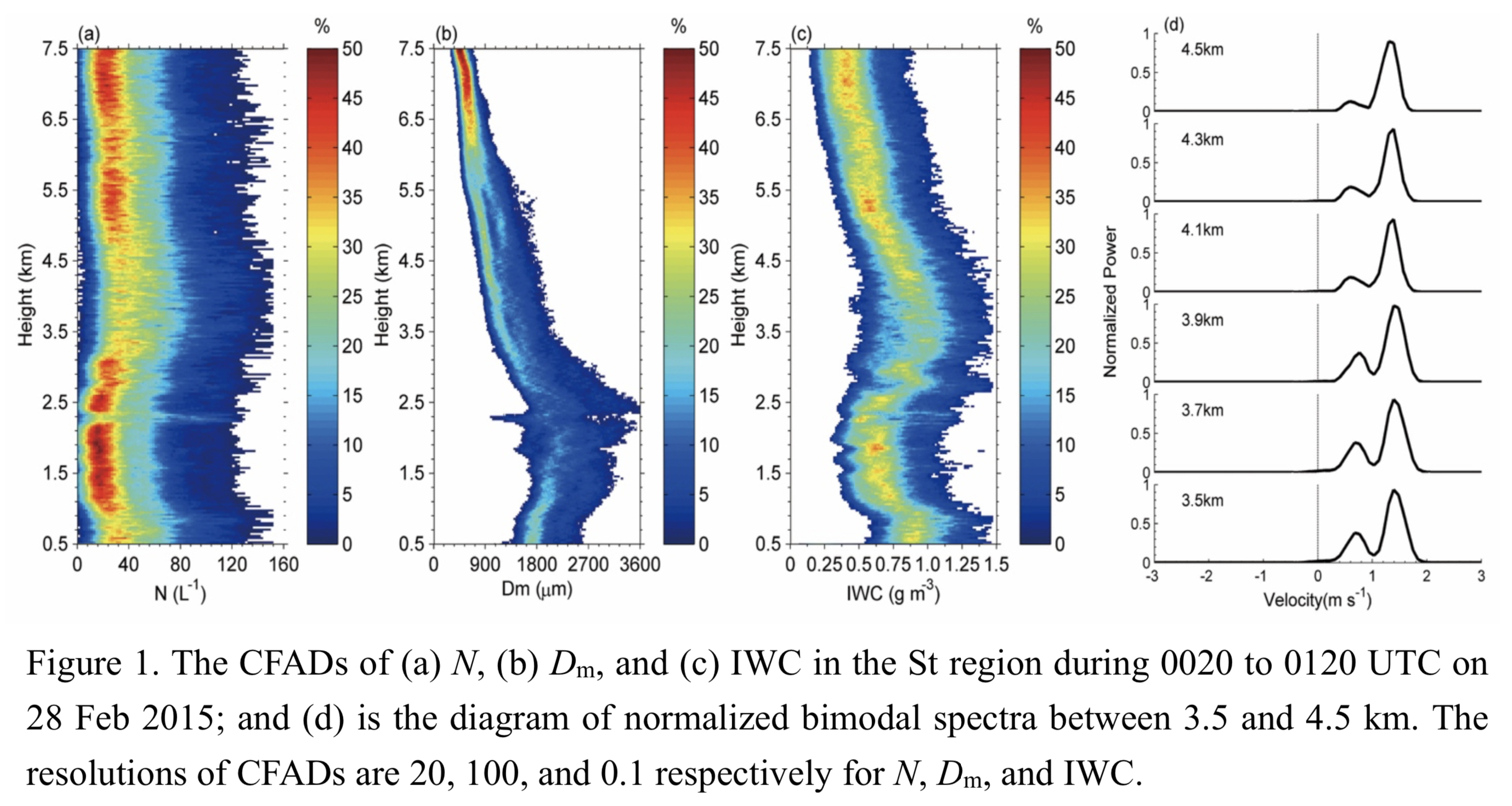Graphical Abstract
Cui, Y., Z. Ruan, M. Wei, F. Li, R. Ge, and Y. Huang, 2021: Vertical evolution of microphysical properties during snow events in middle latitudes of China observed by a C-band vertically pointing radar. J. Meteor. Soc. Japan, 99, 649-671.
https://doi.org/10.2151/jmsj.2021-032
Early Online Release
Graphical Abstract
Published
Plain Language Summary: The snow clouds were divided into upper generating cell (GC) and lower stratiform (St) regions according to their vertical structure. The growth of particle size and mass mainly occurred in the St regions. The increases of ice particle number concentration (N) were usually observed near −5°C accompanied by bimodal Doppler spectra, which might be caused by ice multiplication. The average ratios of the median N, median mass diameter (Dm), and ice water content (IWC) inside GCs to those outside GCs are 2, 1.3, and 2.5 respectively for shallow events, with 1.7, 1.2, and 2.3 respectively for deep events. These values were basically the same as those for the fall streaks (FSs), implying the importance of GCs to the enhanced ice growth subsequently found in FSs. The larger values of N, Dm, and IWC inside GCs could be related to the upward air motions inside GCs. The first Ze–IWC relationship suitable for snow clouds in the midlatitudes of China was also established.
Highlights:
- In this study, the N, Dm and IWC values were retrieved more precisely by using Doppler spectra from CVPR-FMCW.
- The differences in N, Dm, and IWC between the inside and outside of GCs and FSs were discussed associated with the dynamical properties.
- The first Ze–IWC relationship suitable for snow clouds in the midlatitudes of China was established, and the possibility of studying IWC in snow clouds through Ze observed by ground-based radar was discovered.







